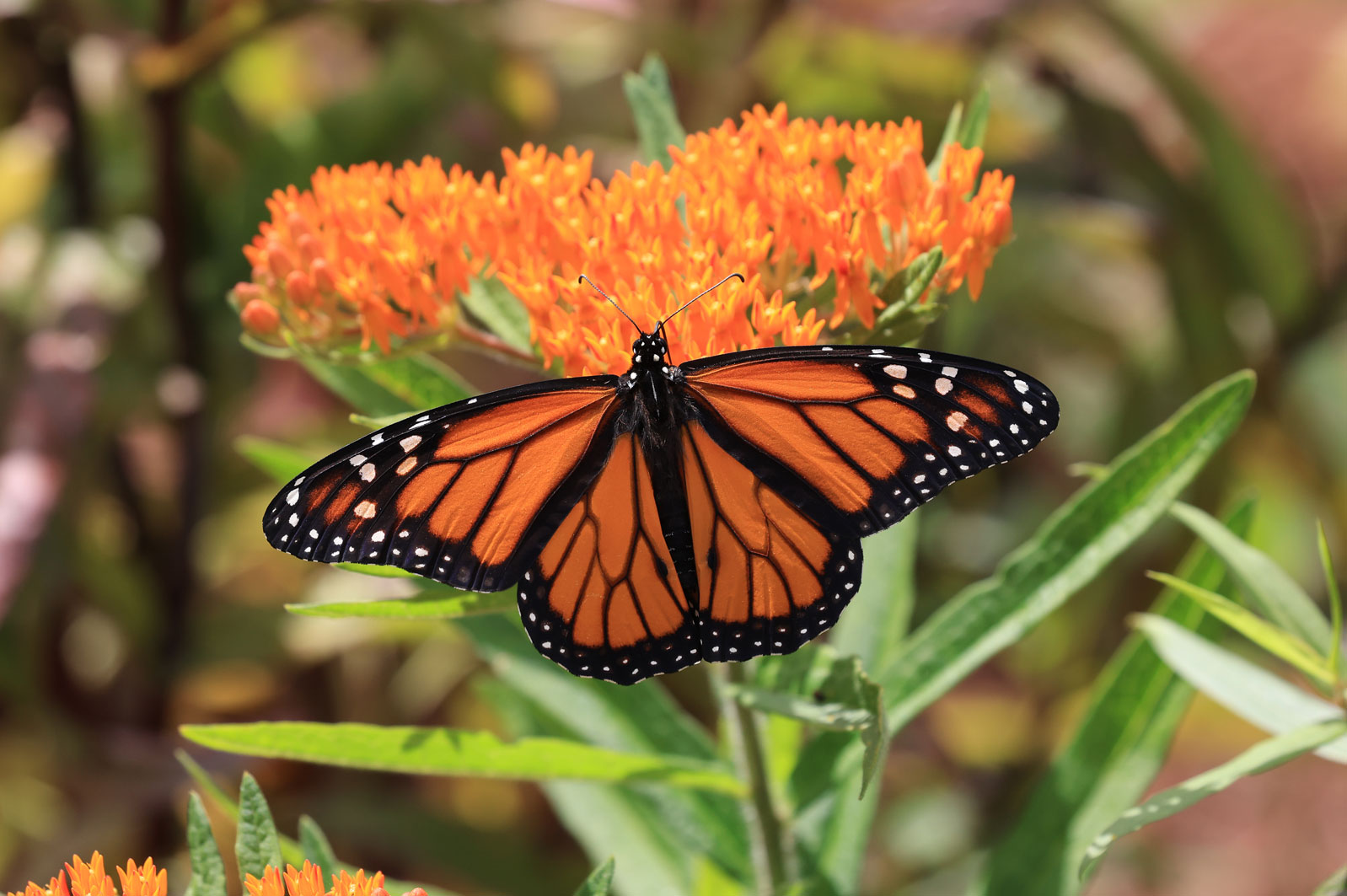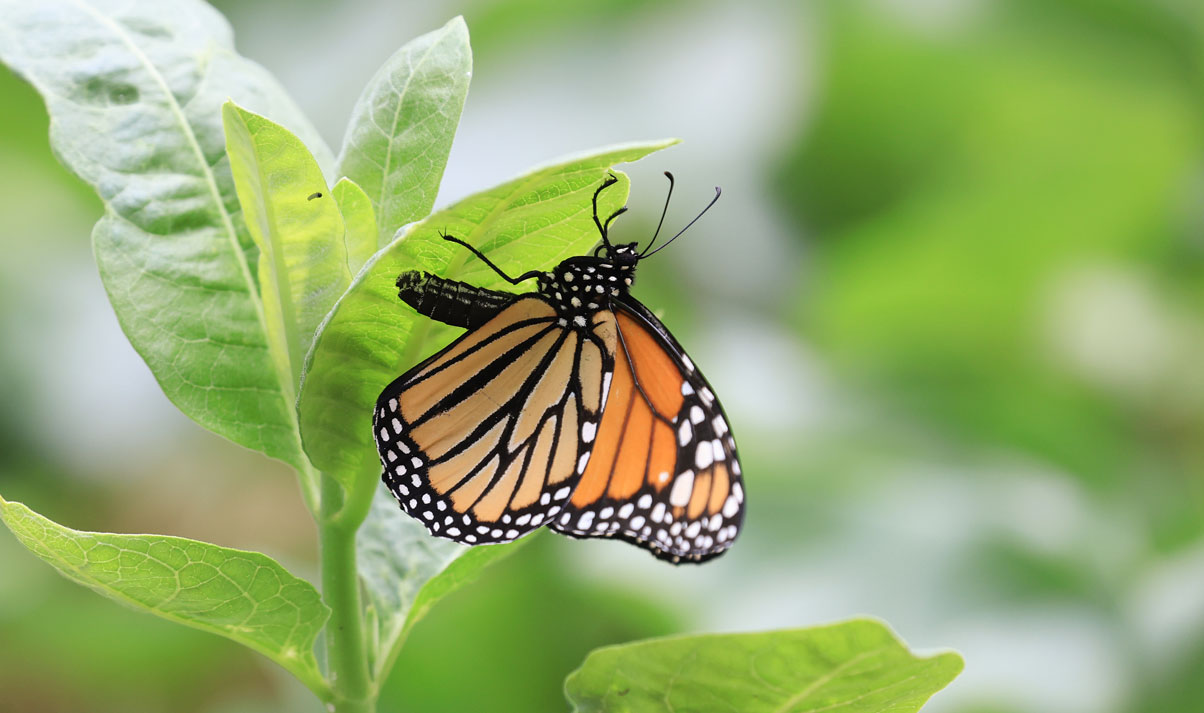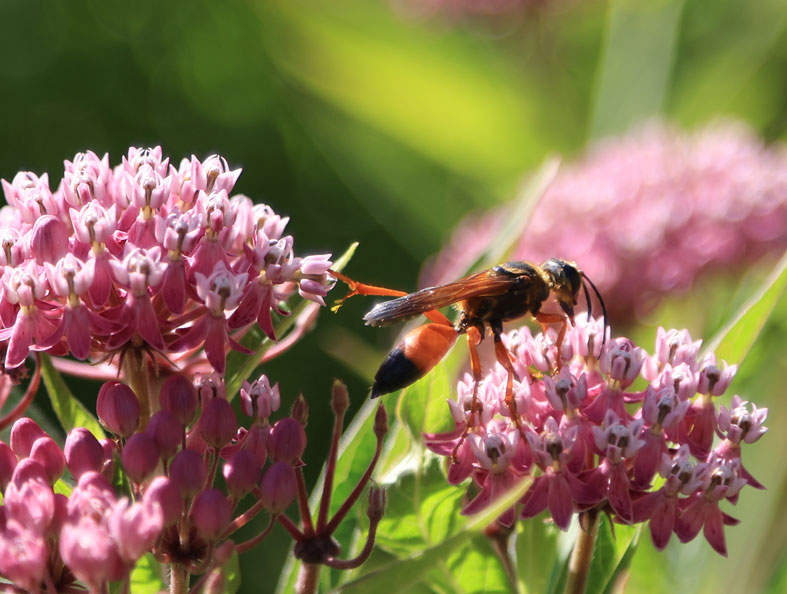Preserving Cape Cod’s native species for pollinators.
Text and Photographs by Marcy Ford

Looking for a way to escape the stresses of the day? Imagine if it was as easy as taking a step onto your own deck or into your own back yard, where you can relax to the most natural and ancient soundtrack: the sound of bees buzzing and birds singing. All that you can experience in this peaceful moment in nature is available to you because of pollinators. And you can begin to create a haven of biodiversity for both you and the pollinators in a very short amount of time, whether you have only a few potted plants or multiple acres. Every effort counts.
Pollinators are essential to the reproduction of more than three-quarters of our flowering plant species. This includes the plants that produce the fruit and seeds that make up our food and natural medicine supply. Many pollinators are in decline worldwide and right here at home on Cape Cod due to loss of habitat, use of chemicals on landscapes, increased temperatures, and competition/predation of non-native species. The Cape’s pollinators include species of butterflies, moths, bees, wasps, ants, beetles, and flies as well as bats and hummingbirds. They depend, in part or entirely, on native species of plants.
You can find examples of pollinator-friendly gardens and landscapes across the Cape, including Wellfleet Audubon Sanctuary, the Lyn Peabody Wildflower Garden at the Museum of Natural History in Brewster, and Thompson’s Field in Harwich, just to name a few. These and many other gardens are part of the Pollinator Pathway program (pollinator-pathway.org/towns/cape-cod), which is a great resource for plant lists and information on creating your own pollinator-friendly landscape.
Whatever your space, time, and budget, there are ways to join in the movement to help our pollinators survive and thrive. Our individual and collective stewardships are needed for the preservation of Cape Cod’s unique ecosystems.









Here are a few tips for creating a pollinator-friendly garden and landscape.
Go Native
Intersperse native plants among the existing plants in your yard. Non-native species provide less benefit to pollinators, sometimes being entirely sterile or even poisonous to pollinators. In addition, they often require more water and maintenance. Select native species that will thrive in your particular growing space by taking into consideration their individual water, sun exposure, and soil requirements.
Buy Local
When purchasing plants, make sure to get them from trusted sources that do not grow using neonicotinoids, a group of pesticides that are deadly to pollinators. Local garden club plant sales are great places to find native plants. Organizations like the Association to Preserve Cape Cod have long been pioneers in promoting the idea of gardening with native species and pollinator proliferation. In the last few years, local garden centers have also begun showcasing native plants.
Do Not Disturb
In the winter, leaves and dead flower stalks provide habitat for pollinators and other wildlife that need protection from the weather and/or utilize the leaf litter to lay eggs. Wait a couple of weeks after the last frost to do your spring garden prep to give eggs time to hatch and temperatures to warm up. It’s recommended that you leave some areas of your garden wild as many of our native bees are solitary and nest in the ground, in fallen branches, logs, brush piles, and plant stems, while others prefer bare soil.

Flower Power
Many people despise the dandelion and mow over the clover that come up in their lawns; however, both are valuable to some pollinators. These “weeds” are actually wildflowers. When planting, refrain from using pesticides and chemical fertilizers. Pesticides are non-discriminatory and “safe” pesticides means safe for you but not for the pollinators.
Make Space
When planning out your garden layout, opt for larger groupings of plants that make nectar collection more efficient for pollinators. When plants are spaced closer together, they provide shelter from predators, shade out actual weeds, and prevent soil erosion, making your garden easier to maintain.
Water Features
Install a bird bath or shallow dish in a place that’s convenient to clean and keep filled. A rock with an impression that gets filled while watering or by rain is a natural-looking way to incorporate a drinking station, especially for butterflies. Rocks also allow butterflies to bask in the sun while absorbing the heat.
